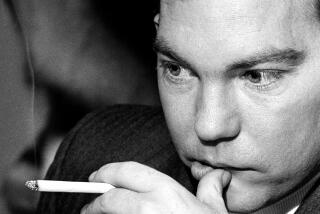How evidence once thought destroyed helped free a man after 39 years behind bars for murder he didnât commit
Decades into a life prison sentence without the possibility of parole, Craig Coley continued to insist he was innocent.
The former restaurant night manager had fought unsuccessfully for years to overturn a conviction for a grisly double murder that had shocked Simi Valley in 1978.
But when police recently reopened the case, they faced a daunting obstacle. After Coley lost his final appeal years ago, a judge had issued an order permitting the destruction of the crime scene evidence.
A cold-case detective began what some expected to be a fruitless search. He tried to contact the two laboratories that had performed rudimentary tests on the crime scene evidence in the 1970s and found that both had gone out of business. A Northern California lab had acquired their contents.
Thatâs when the detective discovered that the evidence boxes had not been destroyed but were sitting forgotten, intact and in storage.
New tests found that a key piece of evidence used to convict Coley did not carry any of his DNA, investigators said.
âWe had thought it was destroyed,â Michael Schwartz, Ventura County special assistant district attorney, said in an interview Thursday. âWhether weâd reached the same conclusion without that, I donât know.â
Gov. Jerry Brown pardoned Coley on Wednesday, writing that the DNA evidence and a painstaking re-investigation of the case proved his innocence.
Coley was 31 when he was arrested, and 70 when he was released Wednesday. A former Simi Valley police officer who was convinced of Coleyâs innocence plans to help him âget acclimated to freedomâ in San Diego, the officer wrote on a GoFundMe page.
It was a relative who came across the bodies of Rhonda Wicht and her son on Nov. 11, 1978. Suspicions had been raised when Wicht, 24, had not arrived for a family get-together.
Police said she had been beaten, raped and strangled with a macrame rope. Her 4-year-old son, Donald, had been smothered in his bed, presumably because he might have identified his motherâs killer.
Wicht had dated Coley for two years, but they were âin the process of breaking up,â officials said this week. Coley was held for questioning the same day.
He was ultimately charged with the two murders.
Defense attorneys criticized Simi Valley police for failing to investigate three other possible suspects, according to news accounts at the time. And the Simi Valley Mirror, a weekly tabloid, published reports asserting that investigators had focused on an innocent man.
At Coleyâs first trial, jurors spent four weeks deliberating before announcing they were hopelessly deadlocked 10 to 2 in favor of guilt.
A second jury convicted him of two counts of first-degree murder in 1980, and he was sentenced to life in prison without the possibility of parole.
But last fall, Simi Valley Police Chief David Livingstone was going through old news clippings about his department and came across some from the Wicht murders. He reached out to a retired detective who had expressed concerns in the past about whether Coley was guilty. With his interest piqued, Livingstone decided to reopen the case.
Schwartz, the Ventura County prosecutor, said the recent investigation determined that the original detectives decided too quickly that Coley was their man and did not fully investigate other possible suspects â a phenomenon known in wrongful conviction cases as âtunnel vision.â
Three current and former police officers told Brownâs office that the detective at the time had âmishandled the investigation or framed Mr. Coley,â the pardon said. The district attorneyâs office has not decided if the detective committed misconduct, Schwartz said, but the investigation is continuing.
â âFramedâ is a strong word,â Schwartz said. âThat implies that someone knowingly blamed the wrong person. I doubt that occurred.â
Still, the re-investigation of the case turned up several inconsistencies.
An upstairs neighbor had reported seeing Coleyâs truck parked outside Wichtâs apartment around the time of the murder, and saw it drive away shortly afterward. The witness noted the driverâs medium-length hair and the pinstripes along the side of the truck, which matched the description of Coleyâs.
That testimony was key to Coleyâs conviction, The Times reported at the time.
Exactly 39 years later, on the anniversary of Wichtâs murder, Simi Valley police returned to the apartment complex in the early morning hours and stared out the same window.
âThey could see very little,â Schwartz said. âThey could see vehicles, but the idea that someone could identify markings on the side of a vehicle is very unlikely. They couldnât see inside it at all.â
Another neighbor initially told police the murder had been committed at 4:30 a.m. At that same time, Coley was carpooling home with a coworker from his restaurant job, which Schwartz described as âan airtight alibi.â
The second neighbor later testified that the murder had taken place at 5:30 a.m. and denied saying he thought it had happened an hour earlier. Years later, he began to vacillate again.
âThat was an indication that the timing may not have been as firm as we thought,â Schwartz said.
Coley was a model prisoner during his 38 years and 10 months of incarceration, Brown wrote. He avoided gangs and drugs, and earned his bachelorâs degree.
âI understand that heâs not bitter, that he has a positive attitude, which I think is quite remarkable,â Schwartz said. âThis whole case is tragic. The murder was tragic, and this is a waste of a personâs life.â
Follow us on Twitter: @laura_nelson and @AleneTchek.
More to Read
Sign up for Essential California
The most important California stories and recommendations in your inbox every morning.
You may occasionally receive promotional content from the Los Angeles Times.












